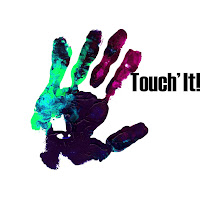 Image of Environmental Bumper Stickers from Google.com
Image of Environmental Bumper Stickers from Google.comBumper stickers can be;
• As personal as you like
• Messages and meanings instead of just a pattern
• Text and images
• Themed
• Colour or black and white
• Made for cars-students who travel to and from the sculpture park
• Made for laptops-many students have them for work and to research the sculpture park check up events etc
• The are good advertisement for the park and each design is personal and unique that only friends of the park can get
- They are a prefect souvenir.
There is lots of great information on how to make bumper stickers on this website; http://www.howtoadvice.com/BumperStickers on how to make and sell them Bumper Stickers How To
Below is also an extract from an interesting article into the history of bumper stickers from the following website;
Early History Bumper Stickers
"In 1927, Henry Ford changed the way we got from point A to point B. We replaced the horse and carriage with the Model A and then we quickly found a way to turn these metal contraptions into a new way to express our opinions. Henry Ford also did something else for us with the automobile. He put them out for thousands of people to purchase and as people began to have accidents, he added the bumper to provide some protection to the front and back of the car. Combine this bumper with America's desire for free speech and people found a new way to advertise their products and ideas.
The first bumper "stickers" were made of cardboard and metal. These were then connected by wire and string. In fact, they looked more like a license plate than a sticker. Nevertheless, these were the forerunners of bumper stickers, as we know them today.
A change to the way bumper stickers were made would come later. In the 1930's, Forest P. Gill worked for the Crawford Manufacturing Company in Kansas City, Missouri. The company had been making canvas items such as seat and tire covers. The canvas was a sturdy material that was also very versatile, as it could be printed on with ink through silk screening. These inks were different from the dyes that had been used in the past, as the dyes would fade or run in the sunlight or rain. As a result, the canvas turned out to be an excellent option for printed advertisements for the outdoors. Soon, canvas was used for outdoor advertisements on the canvas awnings that went over store windows and later they were used for covering spare tires and turning those into advertisements as well."


No comments:
Post a Comment